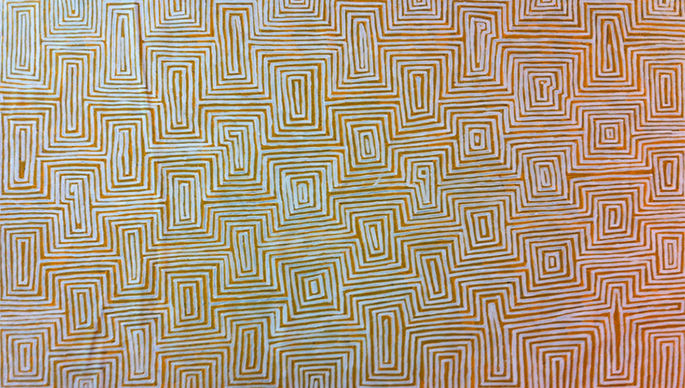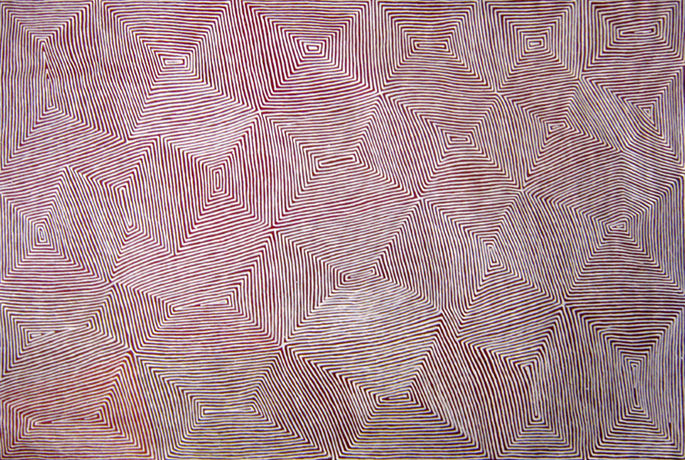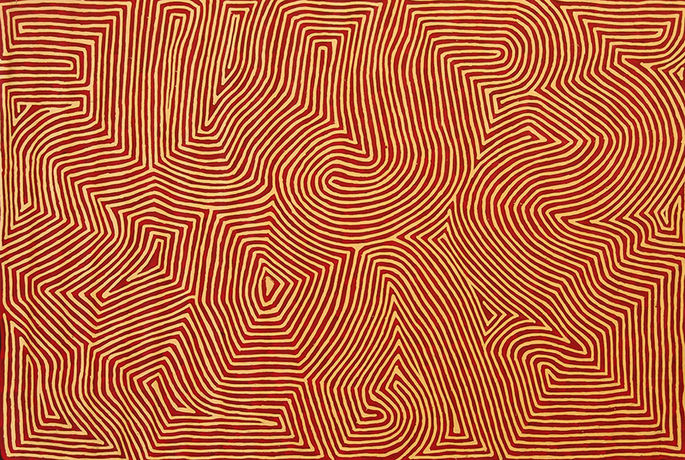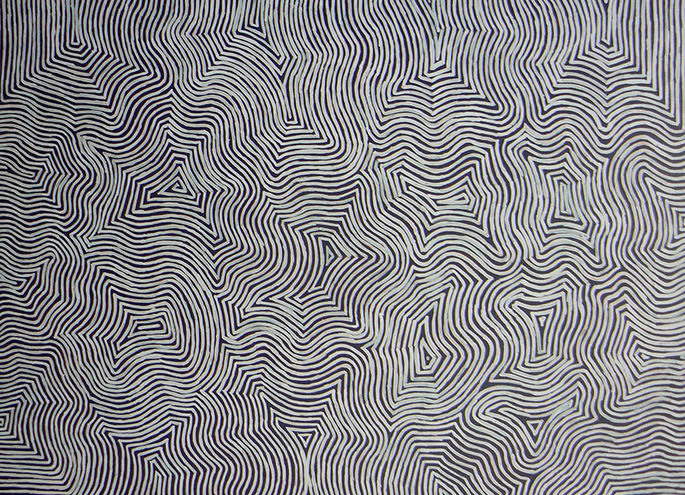
GEORGE TJUNGURRAYI
Nationality:
Australian
Year:
George ‘Hairbrush’ Tjungurrayi
Salient Points
Born circa 1947
Finalist in the Wynne Prize 2003 & 2007
Listed on Australian Art Collector Magazines “50 most collectable artists” repeatedly throughout the last decade, deemed the most collectable Australian Artist of 2008.
One of the original artists from Papunya Tula – now an elder of his community and one of a sadly dying generation.
Auction record of $72,000.00 attained in 2009 during the GFC and now in 2023 $153,837.00
At auction George’s works have an impeccable history of trade
His works are included in the important domestic public collections: National Gallery of Victoria, Art Gallery of NSW and the National Gallery of Australia
Internationally his works are included in the recognized ancient culture collections - Musee des Arts d’Afrque et d’Oceania, Paris; the Kelton Foundation collection in Santa Monica, California
Biography
Born near the claypan and soakwater site of Wala Wala in the far reaches of the Western Desert, George Tjungurrayi's initial contact with the outside world occurred as a seventeen-year-old. He left the Gibson Desert on foot in the company of three other Pintupi companions to walk the long road east until intercepted by a truck just south of Mount Doreen. Soon after walking into Papunya in 1962, he became a guide for Jeremy Long’s welfare patrol in to Pintupi country later that year. He finally settled in West Camp, Papunya where he began painting around 1976 after encouragement from Nosepeg Tjupurrula. Over the following decade George worked intermittently at Yayayi and Mount Liebig, and also Walungurru. His works created during the 1970’s and throughout the 1980’s were characterized by the ubiquitous dotted grids of lines and circles common to works by Yala Yala Gibbs, Anatjari Tjamptjinpa and others who played a formative influence in Pintupi Tingari imagery.
Collections & Exposure
George Tjungurrayi held his first solo exhibitions in Sydney in 1997 and in Melbourne the following year after which the critic Robert Rooney wrote a rave review in the Melbourne Age. By 2000 George Tjungurrayi had become one of the original Papunya movements most sought after painters and was listed amongst Art Collector magazine’s 50 most collectable artists in 2003 the same year that he had been included on the exhibition Meridian, Focus on Contemporary Aboriginal Art at the Museum of Contemporary Art in Sydney. His work featured in the landmark exhibition Talking about Abstraction at the Ivan Dougherty Gallery in 2004, an exhibition intended to compare works by Western and Indigenous artists and examine the ways in which each was directly influenced by or resonant with the other. In 2006 he was highly commended in the 34th Alice Prize and the following year he was selected as a finalist in the Wynne Prize at the Art Gallery of New South Wales. George Tjungurrayi’s work is held in many important international museums including the Groniger Museum in the Netherlands and the Musee des Arts d’Afrique et d’Oceanie in Paris. Alongside Ronnie Tjampitjinpa, George Tjungurrayi has now become the principle living exponent of Pintupi men’s art.







